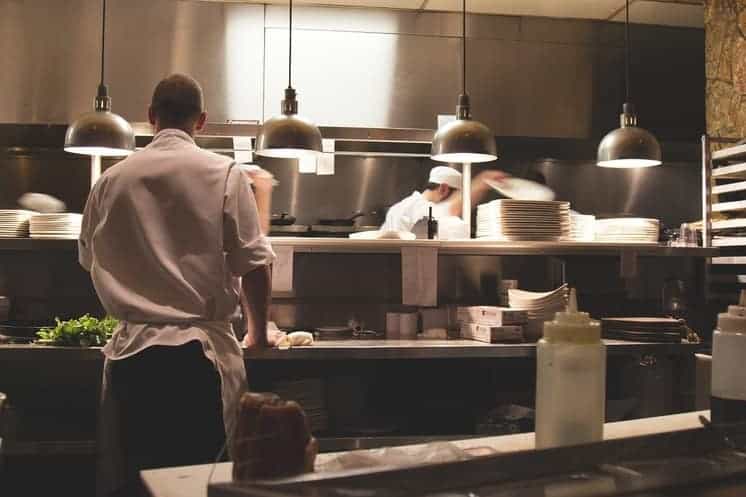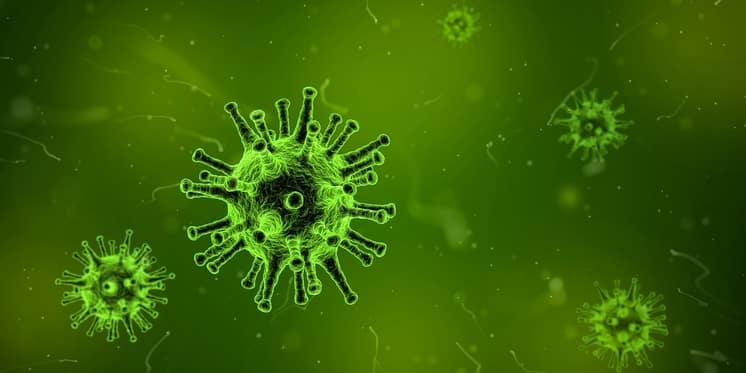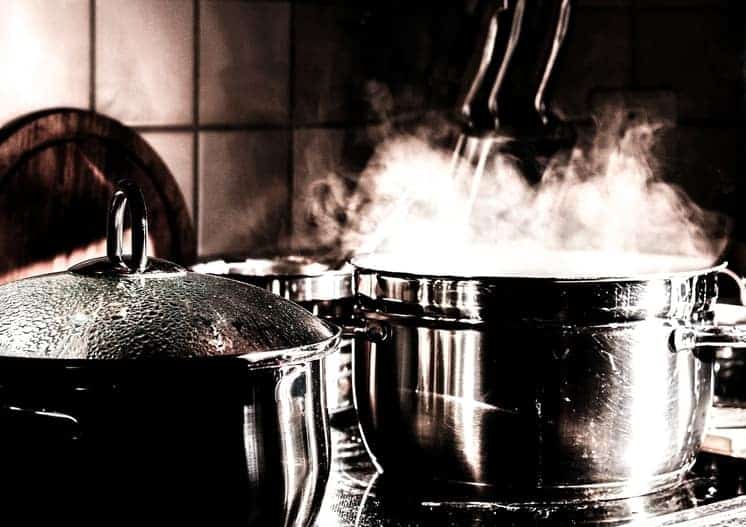Very much like everything else in life, the pressure cooker comes with both pros and cons. The first variation of the pressure cooker was introduced to the world by Denis Papin back in 1679. Back then it was known as the “steam digester” but the principle was the same. Today, a pressure cooker is far from what it was back then – the pressure cookers of our generation come with fancy features and safety measures that were, in my opinion, much needed.
The Advantages of Pressure Cookers
Very well, I understand that you’ve come to me in the hope of uncovering the flaws and benefits of the pressure cooker – so let’s get to it already.
It retains nutrients effectively
No matter how you prepare your food, there will be a nutritional loss – to some extent. Pressure cooking is a method of cooking that retains nutrients in foods effectively. When boiled or steamed, water-soluble vitamins may be depleted from foods, making the meal less nutritious.
Nutrients are often destroyed when exposed to high temperatures for long periods of time. The pressure cooker operates at low temperatures but can still cook food very fast thanks to the added pressure – the nutrients are, therefore, exposed to heat for a short period of time – cutting the nutrient loss significantly.
Any nutrients that are lost during the process are contained in the liquids trapped inside the pressure cooker. It is recommended to use the liquids to make broth, gravy or soup to ensure that the nutrients are consumed.
For those who are hungry for knowledge, I’ve included two studies on the subject.
- Effect of household cooking methods on nutritional and anti nutritional factors in green cowpea (Vigna unguiculata) pods.
- Effect of home processing on ascorbic acid and beta-carotene content of spinach (Spinacia oleracia) and amaranth (Amaranthus tricolor) leaves.
The pressure cooker does not form potentially harmful compounds
Cooking foods that are rich in carbohydrates, such as potatoes, may lead to the formation of acrylamide – a harmful compound that has been linked to the development of various types of cancer and infertility. The compound forms at a much higher rate when food is baked or roasted.
Foods cooked by pressurized steam contain very little acrylamide in comparison to other methods.
Additionally, the pressure cooker can effectively reduce lectin and aflatoxin levels in foods and is, therefore, a great way of cooking beans, rice, wheat, and corn.
Lectin is an anti-nutrient that stops some nutrients from being absorbed by our bodies. Aflatoxins are produced by mold and may be present when rice, wheat, corn or beans have been stored in humid places. Boiling food that hosts aflatoxins does not remove them – but pressure cooking can reduce the aflatoxins to levels that aren’t harmful to us.
It cooks food faster than many other methods of cooking

Because pressure cookers are sealed shut, the steam produced inside them has nowhere to go, this will, in turn, cause the pressure inside the container to rise steadily as more steam is produced. The increased pressure raises the boiling point of the water in the container to 250F/121C (at sea-level water boils at 212/100C).
Without the pressure, the water would not be able to reach temperatures as high as 121C – it would evaporate. Instead, the heat is kept inside the container, which, in turn, causes the pressure cooker’s contents to be cooked much faster than most other methods (except for microwave ovens).
The increased pressure also forces the heat to enter the foods. These two factors combined can cut cooking times by up to 70% in the pressure cooker – making it an extraordinary appliance when it comes to saving time.
The container preserves flavors
Anything sealed inside the pressure cooker, bathing in the liquids, will preserve flavors more effectively than it would if the moist and steam could escape.
When cooking meat, the pressure cooker will ensure that the meat falls right of the bone with very little effort. In addition to that, the juices that the foods are cooked in are absorbed into the meat, making them both juicy and tender.
There are expensive, cheap and medium-priced models.
Thankfully, the price of pressure cookers ranges from $20 up to 200. The cheaper models can still perform, however, they are most commonly used for camping and traveling.
If you plan on using your pressure cooker on a regular basis, I suggest getting something in the medium price class – somewhere between $50 and $150. They come with more features, functions, and are often higher-quality products.
It does not consume much electricity
When you think of it, it doesn’t sound unbelievable, right? Seeing as the pressure cooker can cut cooking times by up to 75%, it seems logical that it also uses less energy per batch of food prepared.
Other eco-friendly benefits include:
- The pressure cooker uses up to 75% less water than other methods when steaming. When there’s less water to heat, the pressure cooker can reach boil faster – saving both time and energy.
- The pressure cooker won’t heat up your house as an oven would. Of course, during winter it would be nice with an extra heat-source, but during summer it’s more of a curse.
- Many pressure cookers only power their heating elements when the pressure levels aren’t maintained. Once stable, the heating elements go into a stand-by until it needs to heat the inner pot again.
Using a pressure cooker will not save you a fortune – but each year, you may be able to spend an extra $30-40 dollars, knowing you saved that by using the pressure cooker.
Pressure cooking kills bacteria

As the boiling point of the water in the container rises to 121C – it creates an environment where few bacteria would like to reside.
The combination of heat and pressure has been used for a long period of time to get rid of bacteria. In fact, the pressure cooker is very similar to the autoclave process which is used in hospitals to sterilize surgical equipment and laboratory instruments.
The pressure cooker does not kill all bacteria right away. Some bacteria have to be exposed to pressure and heat for a sufficient period of time to be killed. Bringing the pressure cooker to pressure will, however, kill almost all bacteria that are responsible for food poisoning.
It can be used to cook a wide variety of foods
Pressure cookers can be used cook a bunch of different things, all at the same time – just keep in mind that meat and vegetables, for instance, don’t need the same amount of time to cook.
You can even cook frozen food in a pressure cooker – you may need to adjust the cooking time but it can be done. Some foods will foam a lot in the pressure cooker – you can either avoid using them entirely or add a little oil when cooking foods that foam to prevent them from foaming.
A pressure cooker is an essential tool at high altitudes
It may seem like a strange thing to list but it really isn’t – many of us live at high altitudes. In the United States, for instance, one-third of the inhabitants actually reside at high altitudes. Cooking under such circumstances is different from what it is at sea-level. At high altitudes, water boils at lower temperatures which makes the process of cooking food a lengthier endeavor.
With the pressure cooker, you can achieve high levels of pressure even at high altitudes, cutting cooking times by quite a lot.
What are the Disadvantages of Pressure Cooking?

The sealing ring/gasket needs maintenance
The sealing ring must be in good condition to ensure that the container can seal properly and build up pressure. It’s important to clean the gasket after each cooking cycle to make sure that there’s food stuck to it – preventing it from sealing. It is recommended to replace the sealing ring within the first two years of using the pressure cooker – preferably once a year to be on the safe side.
Overcooking is easy
Under such pressure it’s much easier to overcook food. It only takes a couple of minutes for foods to overcook. People who recently purchased their pressure cooker often complain about food being soggy or overcooked.
Following a cookbook or online recipes is an easy to avoid overcooking items.
You can’t check on food or tweak the taste throughout the process
The ability to build up pressure within the container is both a gift and a curse at the same time – it prevents the user from opening the lid to check on food or add ingredients. Doing so would depressurize the cooker entirely and the user would have to pressurize all over again.
Cooking in a pressure cooker is primarily about timing.
There’s a learning curve to it
Using a pressure cooker is different from boiling and recipes may have to be modified slightly to fit the pressure cooker’s methods. At first, it may be hard to get the timing right. Thankfully, there are guidelines and recipes online.
Even with the disadvantages, I still love my pressure cooker and use it as much as possible when cooking at home. Using the PC regularly taught me that these issues are rather small in comparison to the advantages that come with pressure cooking.
Related Questions
How dangerous are pressure cookers? A pressure cooker in perfect condition is not dangerous at all – the atmospheric pressure is not great enough to cause the metal to blow. A faulty unit may, however, be much more dangerous to anyone within range of a blowout. The pressure cooker contains scolding hot liquids and foods that will, if blasted at someone, burn them severely. Well aware of this, manufacturers have gone above and beyond to ensure that this does not happen.
What causes pressure cookers to explode? It may be caused by steam generating faster than the pressure regulator is capable of managing it. This can be caused by foam rising to the level of the whistle – choking the hole. Without anywhere to go, the pressure will build up to alarming rates.

